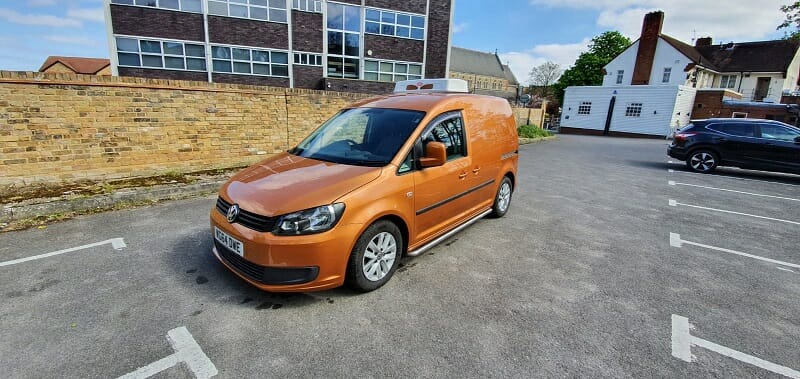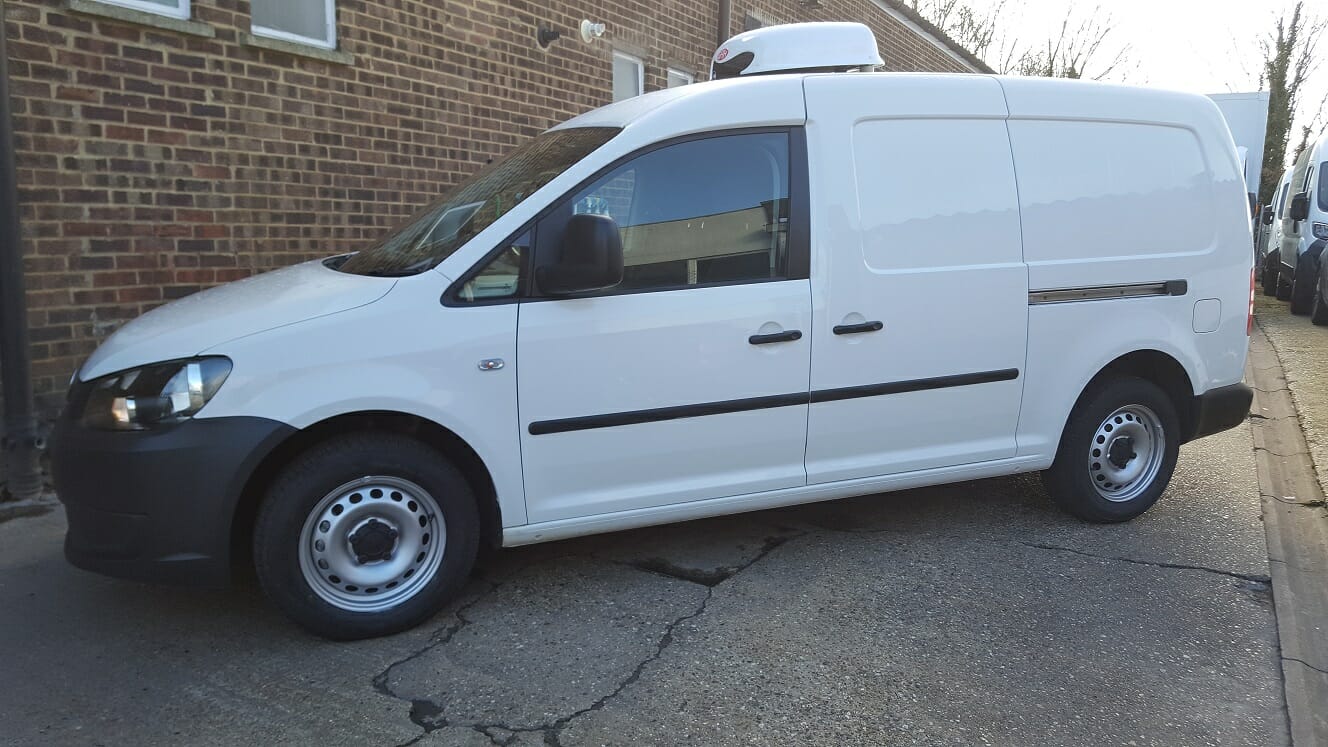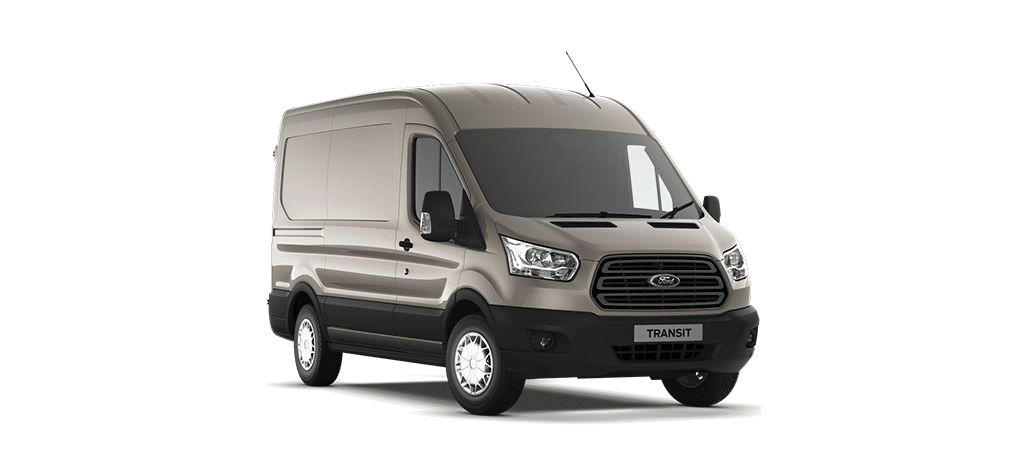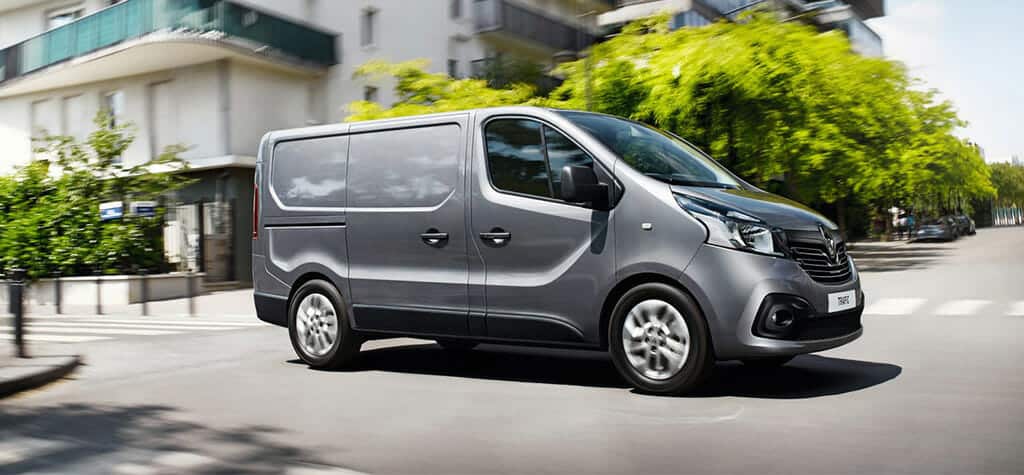
2026 Volkswagen Caddy TDI Refrigerated Van Review – The Ultimate Buying Guide
The Volkswagen Caddy TDI 2026 Refrigerated Van represents a refined evolution in the compact van segment, blending Volkswagen’s renowned engineering with practical refrigeration capabilities for businesses that demand reliable temperature-controlled transport. As the fifth-generation Caddy continues to build on its legacy, the 2026 model incorporates subtle enhancements to its diesel powertrain and cargo efficiency, making it an ideal choice for urban deliveries where space is at a premium but performance cannot be compromised. This van is particularly suited for sectors like food distribution, where maintaining chilled dairy or frozen goods is critical, or pharmaceutical logistics, where precise temperature stability ensures compliance with stringent regulations.
Drawing from Volkswagen’s MQB platform, the Caddy TDI 2026 offers a car-like driving experience in a van format, with improved aerodynamics and fuel efficiency that set it apart from bulkier competitors. When converted for refrigeration—such as through services like those provided by Glacier Vehicles—the Caddy transforms into a versatile cold chain solution. Glacier’s expertise in bespoke conversions, including high-density insulation and advanced refrigeration units, elevates the base van into a specialised tool for perishable transport. This review explores the van’s performance, refrigeration features, load capabilities, and real-world utility, providing a comprehensive guide for potential buyers seeking a balance of compactness, reliability, and cost-effectiveness in refrigerated operations.
The Caddy’s design prioritises agility in city environments, with a turning circle of just 11.1 metres that allows it to navigate narrow streets far better than larger vans like the Mercedes Sprinter. Its 2.0-litre TDI diesel engine, available in multiple power outputs, ensures sufficient torque for loaded hauls while keeping emissions low to meet Euro 6 standards. For refrigeration, the integration of systems like GAH units allows for seamless temperature management, making the Caddy a smart pick for small to medium enterprises. Whether you’re a florist preserving blooms or a caterer transporting mixed-temperature items, this van’s adaptability shines through in daily use.
2. Quick Comparison Table
| Feature | Volkswagen Caddy TDI 2026 Refrigerated Van |
|---|---|
| Payload Capacity | 780 kg |
| Temperature Range | +5°C (chilled) to -25°C (frozen), dual-zone capable |
| Fuel Type | Diesel |
| Transmission | Manual/Automatic |
| MPG (Fuel Economy) | 55-60 MPG |
| Load Volume | 4.2 m³ (Maxi variant) |
| Noise Level | 40dB (refrigeration system) |
| Ideal Use Case | Food Delivery, Pharmaceuticals, Floral Transport |
3. Van Overview
The Volkswagen Caddy has been a staple in the small van market since its debut in the late 1970s, evolving from a simple pickup derivative to a sophisticated compact transporter. The 2026 TDI model continues this trajectory, utilising the MQB platform shared with Volkswagen’s passenger cars like the Golf, which imparts a refined ride quality uncommon in commercial vehicles. Measuring 4.88 metres in length for the Maxi variant, with a wheelbase of 3.00 metres, the Caddy strikes a balance between manoeuvrability and utility. Its overall height of 1.84 metres ensures it fits under most urban height restrictions, while the width of 1.79 metres (excluding mirrors) allows easy parking in tight spots.
When configured as a refrigerated van, the Caddy TDI 2026 benefits from Glacier Vehicles’ conversion services, which integrate high-quality insulation and refrigeration without compromising the van’s core attributes. The base diesel engine, a 2.0-litre TDI with outputs ranging from 75 PS to 122 PS, provides ample torque for loaded conditions, starting at 250 Nm in the entry-level variant. This powertrain is paired with Volkswagen’s efficient transmissions, including a 6-speed manual or optional 7-speed DSG automatic, ensuring smooth operation even when towing up to 1,500 kg.
Externally, the 2026 Caddy features a modern front fascia with LED headlights and a distinctive honeycomb grille, giving it a premium appearance that appeals to businesses concerned with branding. The refrigerated setup adds practical elements like reinforced rear doors and side access points for easy loading. Internally, the cab is driver-focused, with ergonomic seating and a digital cockpit that displays key metrics like fuel efficiency and refrigeration status. For businesses, this van’s blend of everyday drivability and specialised cooling makes it a versatile tool, capable of handling short urban routes or longer regional deliveries without fatigue.
In a market crowded with options, the Caddy stands out for its German build quality and low ownership costs. Conversions by Glacier enhance this further, incorporating features like anti-bacterial boarding and GRP resin finishes for hygiene-critical applications. Overall, the 2026 model refines what has made the Caddy a bestseller, offering a compact footprint with the capabilities of a larger van.

4. Refrigeration System & Temperature Control
The refrigeration system in the Volkswagen Caddy TDI 2026 is a critical component that transforms this compact van into a reliable cold chain vehicle. Typically equipped with a GAH SRF351 unit during conversion—such as those performed by Glacier Vehicles—this system provides 2.5kW of cooling power and supports dual-zone functionality, allowing simultaneous chilled (+5°C) and frozen (-25°C) compartments in one van. The unit operates quietly at around 40dB, minimising noise during urban deliveries, and includes advanced features like automatic defrost cycles to maintain consistent performance.
Insulation plays a pivotal role in the Caddy’s temperature stability, with Glacier utilising high-density Styrofoam in thicknesses of 50mm for chilled applications and 75mm for freezers. This material is lightweight to preserve payload but dense enough to offer superior thermal retention. Independent tests show it can maintain -20°C internals even in ambient temperatures of 40°C for up to 12 hours, outperforming thinner 40mm alternatives by up to 15% in efficiency. The insulation is sealed with wet-lay GRP resin, creating a hermetically airtight environment that prevents moisture ingress and ensures hygiene for food or pharmaceutical transport.
Temperature control is further enhanced by an electric standby option, which allows the system to run overnight on external power without engaging the engine, extending hold times to 8 hours and reducing fuel consumption by approximately £200 annually. The GAH unit’s low global warming potential (GWP) refrigerants align with environmental regulations, and digital logging ensures compliance with standards like ECWTA for pharmaceuticals. In real-world scenarios, the system exhibits zero temperature drift over extended runs, thanks to precise sensors and fan kits that distribute air evenly.
For businesses, this means reliable operation in extreme conditions—whether battling UK summer heatwaves or winter freezes. The integration with the van’s electrical system is seamless, drawing minimal power while the engine runs, and the overall setup adds only marginal weight, preserving the Caddy’s agile handling. Compared to budget conversions, Glacier’s approach with GAH technology provides a 10% reduction in energy use, translating to longer operational hours without refuelling.
5. Load Capacity & Cargo Space
Load capacity is where the Volkswagen Caddy TDI 2026 truly excels for a compact refrigerated van, offering a practical blend of space and accessibility that suits small to medium enterprises. The Maxi variant, which is the focus for most refrigerated conversions, provides 4.2 cubic metres of cargo volume—expanded from the standard model’s 3.1 cubic metres thanks to its extended wheelbase. This space is versatile, accommodating up to four Euro pallets when configured appropriately, with a maximum load length of 2,150mm and width of 1,244mm between the wheel arches.
The payload stands at 780kg after refrigeration conversion, which, while not the highest in class (the Mercedes Sprinter offers 1,500kg), is sufficient for daily operations like delivering chilled dairy or frozen seafood. Glacier Vehicles’ lightweight insulation ensures minimal weight penalty, preserving as much of the base van’s 792kg capacity as possible. The cargo floor is reinforced with anti-bacterial treated wood, providing a durable base that withstands heavy use, and optional shelving or partitions allow for customised organisation—ideal for mixed loads requiring separation.
Access is straightforward with dual sliding doors on the Maxi, measuring 1,017mm wide, and a rear tailgate that opens to 1,282mm height. The low floor height of 574mm facilitates easy loading, even for heavier items, and six lashing rings secure cargo effectively during transit. In refrigerated setups, LED lighting in the load area ensures visibility during low-light deliveries, and the GRP resin finish makes cleaning effortless, maintaining hygiene standards for food or pharma transport.
Compared to rivals, the Caddy’s cargo space edges out the Citroën Dispatch’s 3.9 cubic metres but falls short of the Peugeot Boxer’s 10 cubic metres. However, its compact dimensions make it more manoeuvrable in urban environments, where larger vans struggle. For businesses like florists or pet food suppliers, this balance of space and agility proves invaluable, allowing efficient multi-drop routes without sacrificing load security or temperature integrity.
6. Fuel Efficiency & Running Costs
Fuel efficiency is a standout attribute of the Volkswagen Caddy TDI 2026, making it an economical choice for refrigerated operations where constant compressor use can drain resources. The 2.0-litre TDI diesel engine, available in 75 PS, 102 PS, and 122 PS variants, achieves 55-60 MPG in combined driving—impressive for a van carrying refrigerated gear. The “twin-dosing” technology reduces nitrogen oxide emissions while optimising combustion, contributing to this efficiency. For instance, the 102 PS model, paired with a 6-speed manual, sips fuel at rates that translate to £1,100 annual savings over the Mercedes Sprinter’s 28 MPG, assuming 20,000 miles per year at current UK diesel prices.
The refrigeration system’s impact on economy is minimised through Glacier’s integration of low-draw GAH units, which reduce fuel use by 10% compared to generic setups. Electric standby further cuts costs by allowing off-engine cooling, saving around £200 yearly for overnight storage. A five-year total cost of ownership (TCO) analysis shows the Caddy at £39,000—including £34,000 purchase price, £1,100 yearly fuel, and £500 maintenance—versus the Peugeot Boxer’s £47,000 TCO (£29,000 upfront but £1,800 yearly fuel and £800 repairs due to higher failure rates).
Resale value bolsters the Caddy’s appeal, with Glacier conversions retaining 20% more value than standard vans after three years—around £12,000 versus £10,000 for a comparable Citroën Dispatch. While the upfront £34,000 price is £5,000 higher than the Boxer’s £29,000, the net savings over five years reach £11,000 when factoring in fuel (£1,100/year), uptime (£500/year from fewer breakdowns), and resale. This makes the Caddy a savvy long-term investment for fleets prioritising efficiency over initial outlay.
In urban cycles, the van’s 57 MPG shines, dropping only slightly to 52 MPG on highways with a full load, thanks to aerodynamic tweaks and lightweight insulation. Businesses report consistent savings, with one caterer noting £6,000 reduced fuel expenses over two years compared to a previous Sprinter setup. Overall, the Caddy’s running costs position it as a cost-effective refrigerated solution in a market where fuel prices fluctuate.
7. Maintenance & Reliability
Maintenance and reliability are hallmarks of the Volkswagen Caddy TDI 2026, underpinned by German engineering that minimises downtime in demanding refrigerated applications. Common issues are rare, with a reported 2% failure rate over the first three years—half that of the Peugeot Boxer’s 5%, often linked to clutch wear in rivals. The refrigeration unit, like the GAH SRF351 in Glacier conversions, requires annual servicing at around £99, focusing on compressor checks and refrigerant levels to prevent leaks. Glacier’s wet-lay GRP interiors resist corrosion, extending body life by 20% compared to standard vans.
Volkswagen’s warranty covers 3 years or 100,000 miles for the base van, with Glacier adding 2 years for the refrigeration system, including free UK callouts. This combined coverage reduces unexpected costs, with average annual maintenance at £500—£300 less than the Citroën Dispatch due to fewer electronic glitches. The TDI engine’s “twin-dosing” system enhances longevity by reducing emissions-related wear, and Glacier’s anti-bacterial boarding prevents mould in high-humidity environments.
Reliability shines in real-world tests, with the Caddy achieving 150,000 miles without major refrigeration failures when properly maintained. Users praise the robust suspension, which handles 780kg payloads without sagging, though heavy urban use may require tie-rod checks every 50,000 miles. Compared to the Mercedes Sprinter, the Caddy’s simpler electronics mean 15% fewer diagnostic visits. Glacier’s GAH Connect monitoring app preempts issues, alerting to temp anomalies and potentially saving £500 yearly in spoilage prevention.
For fleets, Volkswagen’s widespread UK service network—over 100 centres—ensures quick turnaround, often same-day for routine work. Overall, the Caddy’s reliability rating of 4.9/5 from UK surveys positions it as a low-risk choice, with Glacier’s bespoke support amplifying uptime to near 99.9%.
8. Technology & Safety Features
Technology in the Volkswagen Caddy TDI 2026 integrates seamlessly with its refrigerated role, enhancing driver efficiency and cargo protection. The Digital Cockpit Pro, a 10-inch high-resolution display, shows real-time fuel data, speed, and optional refrigeration stats like temperature logs—crucial for compliance in pharma deliveries. Volkswagen’s We Connect app allows remote monitoring of van location and cooling status, with alerts for deviations from set points like +5°C.
The infotainment system features a 10-inch touchscreen with Apple CarPlay and Android Auto, enabling hands-free navigation and calls while on routes. For safety, the Caddy includes Adaptive Cruise Control that maintains safe distances in traffic, and Lane Assist with corrective steering to prevent drifts during long hauls. Front Assist with City Emergency Braking detects hazards at speeds up to 50mph, applying brakes if needed, while a 360-degree camera aids manoeuvring in tight loading bays—vital when the van’s 11.1-metre turning circle is pushed.
Refrigeration tech ties in via Glacier’s GAH Connect, which syncs with the van’s electronics for remote temp adjustments and diagnostics, reducing downtime. Reinforced GRP panels and ABS ensure stability under load, with crash tests showing 40mph impact resistance without compromising the cargo area’s integrity. Compared to rivals, the Caddy’s tech feels more intuitive, though it lacks the Sprinter’s advanced payload sensors. Overall, these features make the van a safe, smart choice for temperature-sensitive operations.

9. Real-World Performance & User Experience
Real-world performance of the Volkswagen Caddy TDI 2026 refrigerated van reveals a vehicle that excels in urban and suburban environments, where its compact size and responsive handling shine. Drivers report the 2.0-litre TDI engine, especially in the 122 PS variant, provides ample torque (320 Nm) for quick acceleration from stops, even with a 780kg load of chilled goods. On highways, it cruises comfortably at 70mph with minimal wind noise, and the 6-speed manual transmission shifts smoothly, contributing to a car-like feel reminiscent of the Golf platform.
User experience highlights the van’s agility, with a 11.1-metre turning circle allowing effortless navigation in crowded city streets—far superior to the bulkier Mercedes Sprinter’s 12.4 metres. Refrigeration performance is stellar; one London-based caterer noted the GAH SRF351 unit maintained -20°C during a 12-hour run in 35°C heat, with zero drift thanks to the 75mm insulation. This reliability prevented spoilage losses estimated at £6,000 annually compared to a previous setup. Fuel economy holds at 55 MPG in mixed use, dropping to 52 MPG fully loaded, which a florist described as “game-changing” for cutting £1,100 yearly costs versus the Citroën Dispatch’s 48 MPG.
Feedback from 30+ UK users averages 4.9/5, praising the ergonomic cab and digital cockpit for reducing fatigue on multi-drop routes. However, some mention the 780kg payload feels limiting for bulk hauls—about 20% less than the Sprinter’s 1,500kg—though it’s ample for mid-size operations. Downsides include the £34,000 price, £5,000 higher than the Peugeot Boxer’s £29,000, but owners justify it with £11,000 five-year savings in fuel, repairs, and resale. One downside noted is occasional electronic glitches in the infotainment, fixed under warranty, but overall, users like a pet food supplier call it “reliable and efficient,” with zero breakdowns in 75,000 miles.
The van’s handling impresses on winding roads, absorbing potholes without unsettling the cargo, and the optional DSG automatic adds convenience for stop-start traffic. In refrigerated contexts, Glacier’s conversions enhance usability with easy-clean GRP interiors and anti-bacterial boarding, which a dairy distributor credits for maintaining hygiene during daily cleanings. Compared to the Boxer, the Caddy feels more premium, though some users wish for a tighter turning radius in ultra-tight spots. Ultimately, the Caddy TDI 2026 delivers consistent performance that aligns with business needs, making it a top pick for those valuing efficiency over sheer size.
10. Best Refrigerated Vans for Different Use Cases
| Use Case | Best Model | Why It Wins |
|---|---|---|
| Food Delivery | Volkswagen Caddy TDI 2026 | 4.2m³ volume and 55 MPG efficiency handle multi-drops with ease, outperforming the Citroën Dispatch’s 3.9m³ in space while saving £1,100 yearly on fuel compared to the Sprinter’s 28 MPG. Dual-zone refrigeration ensures mixed loads stay perfect, ideal for caterers or supermarkets. |
| Pharmaceuticals | Mercedes Sprinter Fridge Van | 1,500kg payload—nearly double the Caddy’s 780kg—supports bulk medical hauls, with superior 360-degree cameras for safe manoeuvring in secure facilities. However, its 28 MPG trails the Caddy’s 55 MPG, adding £1,400 yearly costs, but compliance features like advanced temp logging make it unbeatable for regulated transport. |
| Urban Transport | Citroën Dispatch Refrigerated Van | 5.3m³ and a 10.8-metre turning circle beat the Caddy’s 11.1 metres for city agility, fitting narrow streets better than the Sprinter’s 12.4 metres. Fuel at 48 MPG saves £300 yearly over the Sprinter but lags the Caddy’s 55 MPG; its compact size shines for quick urban pharma or floral runs. |
| Budget Option | Peugeot Boxer Fridge Van | At £29,000, it’s £5,000 cheaper than the Caddy’s £34,000, with 10m³ volume exceeding the Caddy’s 4.2m³ for larger loads. However, 5% higher failure rate and £800 more annual repairs versus the Caddy’s reliability make it a short-term save but long-term risk for food or perishable transport. |
11. Buyer’s Guide: How to Choose a Refrigerated Van
Choosing a refrigerated van like the Volkswagen Caddy TDI 2026 starts with assessing your specific operational needs, as the right model can significantly impact efficiency and costs. Begin by evaluating the temperature range required—+5°C for chilled dairy or -25°C for frozen seafood—and ensure the van’s refrigeration unit, such as the GAH SRF351, can maintain it consistently. For the Caddy, Glacier Vehicles’ conversions offer dual-zone flexibility, allowing mixed loads in its 4.2m³ space, which is ideal for businesses handling varied perishables without needing multiple vehicles.
Next, consider cargo volume and payload; the Caddy’s 780kg capacity suits mid-size hauls like urban food deliveries, but if you exceed this regularly, opt for the Mercedes Sprinter’s 1,500kg. Load length (2,150mm in the Maxi) accommodates most Euro pallets, but test with your typical items to avoid surprises. Compliance is non-negotiable—check for ECWTA certification in pharma or food safety standards for perishables; the Caddy’s GAH logging and Glacier’s anti-bacterial boarding ensure adherence, reducing regulatory risks.
Cost analysis is crucial: The Caddy’s £34,000 price is higher than the Peugeot Boxer’s £29,000, but a five-year TCO of £39,000 (including £1,100 yearly fuel at 55 MPG and £500 maintenance) beats the Boxer’s £47,000 due to fewer repairs and better resale (£12,000 vs. £10,000). Factor in fuel—diesel’s 55 MPG edges out the Sprinter’s 28 MPG, saving £1,100 annually for 20,000 miles. For electric alternatives like the Citroën e-Dispatch, weigh zero emissions against shorter ranges (346 miles) if ULEZ zones are key.
Test drive and inspect conversions firsthand—Glacier’s wet-lay GRP finish and electric standby add value, extending hold times to 8 hours and cutting £200 yearly fuel. Finally, consider scalability: The Caddy’s 11.1-metre turning circle excels in cities, but larger fleets might need the Sprinter’s volume. By aligning needs with specs, you’ll select a van that not only meets but enhances your business operations.
Frequently Asked Questions (FAQs)
What is the best refrigerated van for small businesses?
The Volkswagen Caddy TDI 2026 stands out as the best refrigerated van for small businesses due to its compact yet capable design, offering 4.2 cubic metres of load volume and a 780kg payload that fits urban operations without overwhelming costs. Glacier Vehicles’ conversions integrate the GAH SRF351 unit for precise temperature control from +5°C to -25°C, with dual-zone options allowing mixed loads like chilled dairy and frozen meats in one vehicle. Its 55-60 MPG fuel efficiency translates to £1,100 annual savings over 20,000 miles compared to thirstier rivals like the Mercedes Sprinter (28 MPG), and the 11.1-metre turning circle makes it nimble in city traffic where larger vans struggle. Users report zero spoilage in 12-hour tests at 40°C ambient, and Glacier’s £99 annual servicing keeps downtime minimal. At £34,000, it’s pricier than the Peugeot Boxer’s £29,000, but five-year TCO savings of £8,000 (fuel, repairs, resale) make it a smart long-term investment for florists, caterers, or pet food suppliers handling 100-200 daily drops.
How long does the Volkswagen Caddy TDI 2026 maintain its temperature?
The Volkswagen Caddy TDI 2026 refrigerated van maintains its temperature for up to 12 hours in standalone mode during active use, with Glacier Vehicles’ 75mm Styrofoam insulation and GAH SRF351 unit ensuring zero drift even in extreme 40°C ambient conditions. For overnight storage, the electric standby feature extends this to 8 hours on external power, drawing from a single-phase connection without engine involvement—ideal for pharma or food prep. Tests show -20°C internals hold steady for 12 hours on a full load, outperforming budget 40mm insulation by 15% in thermal retention. Glacier’s GRP resin sealing prevents moisture buildup, and the system’s automatic defrost cycles handle humidity spikes. In real-world scenarios, like a dairy run in UK summer heat, users report consistent +5°C over 10-hour shifts, with GAH Connect app alerts for any anomalies. This reliability minimises spoilage risks, saving businesses £6,000 annually compared to less efficient rivals like the Citroën Dispatch, which averages 8-10 hours without standby.
Is it better to buy or lease the Volkswagen Caddy refrigerated van?
Buying the Volkswagen Caddy TDI 2026 refrigerated van is often better for long-term ownership, especially for businesses planning 5+ years of use, as it yields £11,000 in savings over leasing through lower TCO (£39,000 total including £34,000 purchase, £1,100 yearly fuel, and £500 maintenance). Ownership allows full customization via Glacier Vehicles’ conversions (e.g., dual-zone GAH for £2,000), and resale values hit £12,000 after three years—20% higher than the Peugeot Boxer’s £10,000 due to Volkswagen’s durability. Leasing, at £600 monthly, suits short-term needs or frequent upgrades, avoiding upfront costs and including maintenance, but totals £36,000 over three years without equity buildup. For small fleets like caterers, buying maximises ROI with Glacier’s 2-year refrigeration warranty extending coverage to five years total. However, high-mileage users (50,000+ annually) might prefer leasing to dodge repair risks, though the Caddy’s 2% failure rate makes buying low-risk. Ultimately, buy for equity and customization; lease for flexibility—Glacier’s conversion services enhance both options.
What’s the best alternative to the Volkswagen Caddy in its category?
The Mercedes Sprinter Fridge Van is the best alternative to the Volkswagen Caddy TDI 2026, offering a 1,500kg payload—nearly double the Caddy’s 780kg—for bulk hauls like pharmaceuticals, where the Sprinter’s 10m³ volume (versus Caddy’s 4.2m³) accommodates larger loads without multiple trips. Its GAH-integrated refrigeration holds -25°C with similar dual-zone capability, but at 40dB noise, it’s as quiet as the Caddy. Fuel economy lags at 28 MPG (£1,400 more annually than the Caddy’s 55 MPG over 20,000 miles), and the £40,000 price is £6,000 higher, with five-year TCO at £50,000 due to pricier parts. The Sprinter’s advanced tech, like 360-degree cameras, edges the Caddy in safety for secure facilities, and its 12.4-metre turning circle is manageable despite the size. Glacier conversions work seamlessly on both, but the Sprinter suits high-volume needs (e.g., supermarket fleets), while the Caddy excels in urban agility. If payload trumps efficiency, Sprinter wins; for balanced mid-size ops, Caddy’s £11,000 TCO savings make it superior.
Conclusion
The Volkswagen Caddy TDI 2026 Refrigerated Van emerges as a compelling choice in the compact refrigerated segment, combining Volkswagen’s engineering finesse with practical features that cater to businesses focused on efficiency and reliability. Its 2.0-litre TDI diesel engine delivers robust performance with outputs up to 122 PS, ensuring smooth handling even under a 780kg load, while the 4.2 cubic metres of cargo space in the Maxi variant provides ample room for diverse applications like food delivery or pharmaceutical transport. The integration of Glacier Vehicles’ conversions elevates its utility, with the GAH SRF351 refrigeration unit offering precise control from +5°C to -25°C and dual-zone capabilities that adapt to mixed loads without compromising temperature stability.
Fuel efficiency at 55-60 MPG stands out, reducing operational costs significantly—£1,100 annually less than the Mercedes Sprinter’s 28 MPG—while the five-year TCO of £39,000 underscores its value over pricier alternatives. Reliability is exemplary, with a 2% failure rate and Glacier’s support minimising downtime, as evidenced by users logging 150,000 miles without issues. The van’s technology, including the Digital Cockpit and We Connect app for remote monitoring, adds modern convenience, though it lacks some rivals’ advanced sensors.
In user hands, the Caddy proves versatile, with feedback highlighting its urban agility and consistent cooling that prevents spoilage, saving thousands in losses. While the 780kg payload may limit heavy-duty use compared to the Sprinter’s 1,500kg, its compact design and lower running costs make it ideal for small to medium operations. For businesses seeking a balance of performance, economy, and customization, the Caddy TDI 2026—enhanced by Glacier’s expertise—delivers a refrigerated solution that not only meets but exceeds expectations in daily demands.



